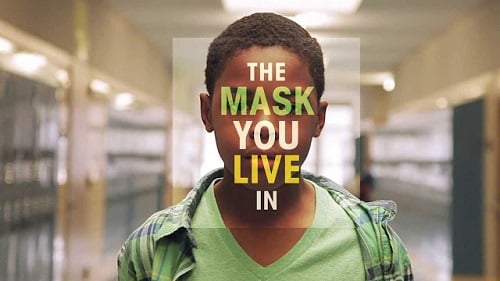Gendertyping
The Mask We Live In – A Psychologist’s Perspective
Before getting into the “meat” (excuse the bad pun) of my topic today, I would like to thank all of you for reading my posts and spreading awareness about the issues being discussed. Feel free to give your feedback or participate whenever you feel like!
Today, my mode of communication is going to be a bit more direct than usual. I must say that my source is itself quite eloquent! It is a documentary titled “The mask we live in” that you can find on Netflix.
As I was commenting to a friend of mine about my feelings about female stigmatization increase and male dominance in our society, I came across this powerful testimony to the intricate yet devastating issue of male socialization in the United States today.
My point is not to paraphrase the documentary. I would not do it justice. My point is to give you a brief summary of the progression of male gendertyping punctuated by alarming numbers. This alarm bell is for all of us: mother, father, family, brother, educators, coaches, writers, film directors, video designers, publicists, and you and ME.
Gendertyping is the conscious or unconscious coding of a person. It starts at birth and continues throughout ones’ life. Parents, educators, media and society contribute on a daily basis to this phenomenon. For boys, it starts with babies wearing blue, continues with truck or gun toys along with the “man up” do and don’t and the code of honor indoctrination.
1 in 4 boy reports bullying at school and only 30% of bullied boys notify adults.
Boys and girls have similar needs and emotions. However, boys are trained, harshly at times, to hide their emotions such as anger, sadness and loneliness behind a mask of domination, power and toughness. With fathers emotionally wounded themselves, absent or neglectful, the youth lacks a necessary male role model which, in turns increases the process of disenfranchisement of many of our teenagers.
Suicide is 5 times more prevalent in boys than in girls and it is the third leading cause of death in boys in the United States.
As boys reach puberty, education is not “cool” any longer. They give up school, resort to drugs, alcohol, gangs, sexuality and violence. They also take refuge in sports and try to prove themselves only to meet similar types of behavior. Overall, they are engaged in the “hypermasculinization” process that is so impacting their relationship with girls and later women.
Boys are 4 times more likely than girls to be expelled, 3 times more likely to be suspended, 2 times more likely to drop out of school.
Teenagers on average watch weekly: 40 hours of TV, 15 of video games and 2 hours of pornography.
99% of boys do videogames, 90% of games rated appropriate for children over 10 years old contain violence
50% of parents do not monitor ratings.
By age 18, young men have already seen 40.000 murders on screen.
I am not a number person and I avoid statistics but let’s face it…these few numbers raised questions!
Do you know what your children are watching?
Are you aware that habituation/addiction start with repetitive behaviors and media education?
1 out of 3 women and 1 one out of 6 men has been assaulted or raped.
Do we remember how it feels and how it has impacted our life, our society?
Did you not, at times, wonder whether our societal mixed messages were helping our young men and women?
Women, is it cool to feel like an object, the “it” thing such as in “I would like a piece of it”?
“We are living in a rape culture where violence against women is in epidemic proportion” and where 90% of homicides are perpetrated by male, half of them being under 25 years old.
Power, money, toughness and women are the stereotypes of the real man. Many young men thrive to achieve this status but what is the price?




